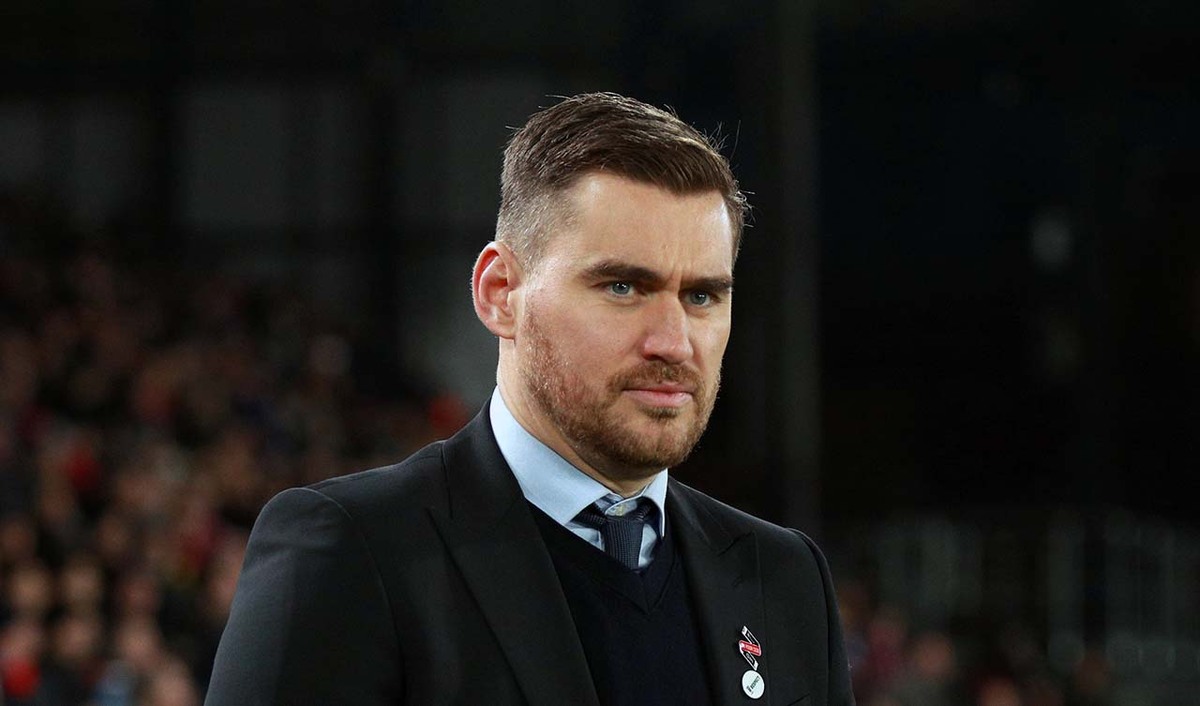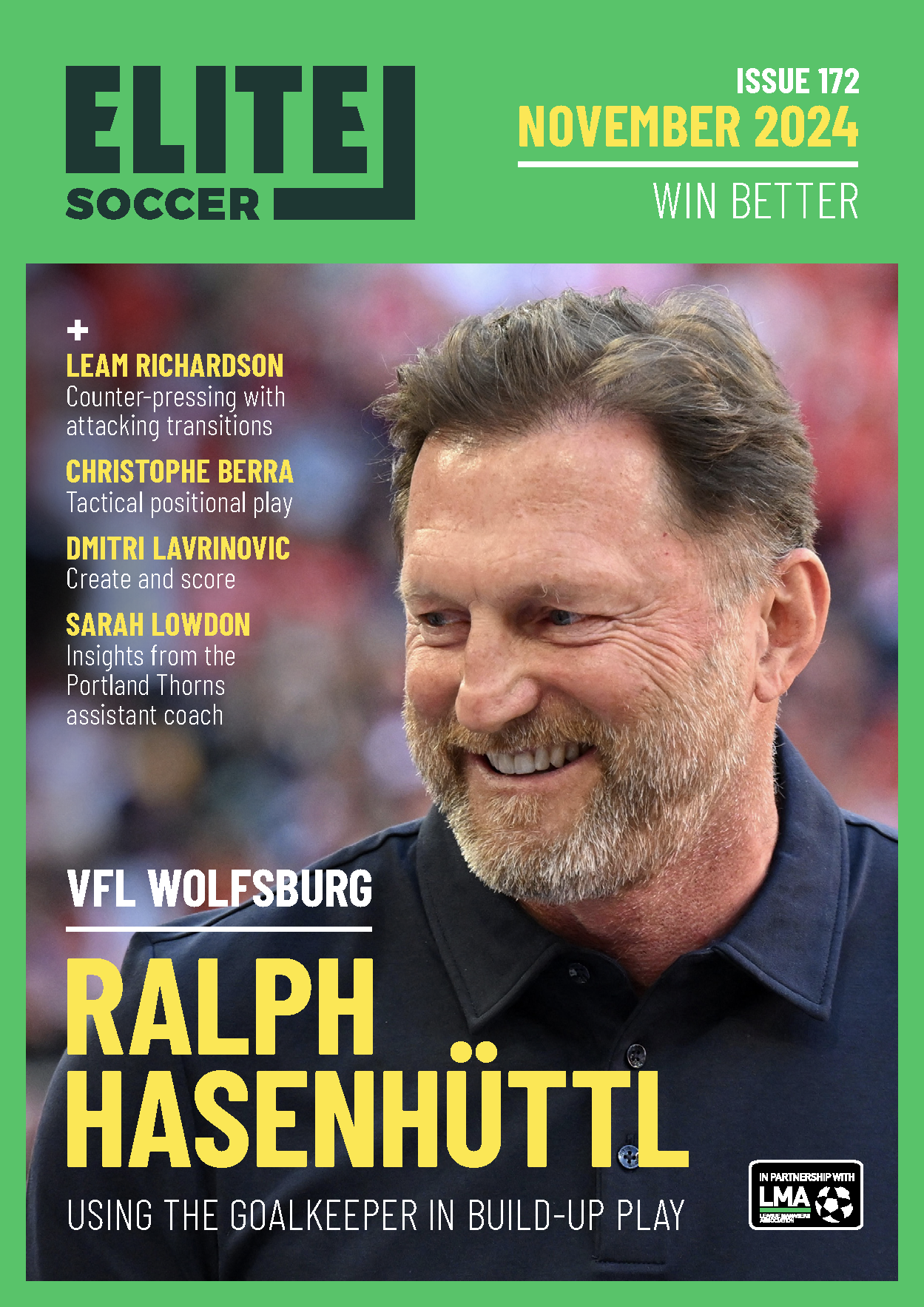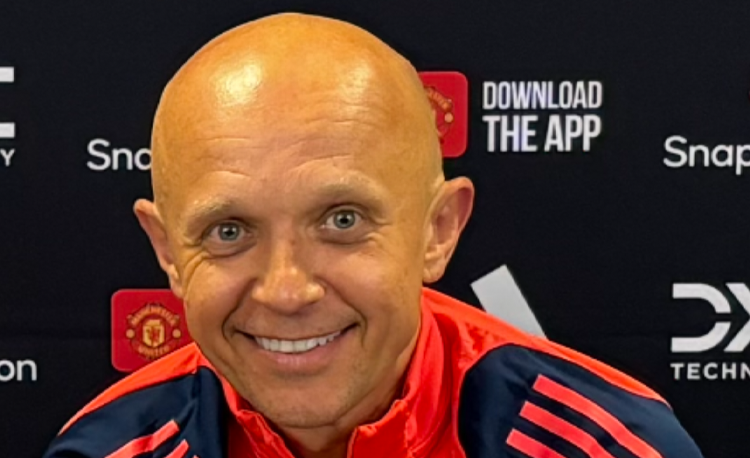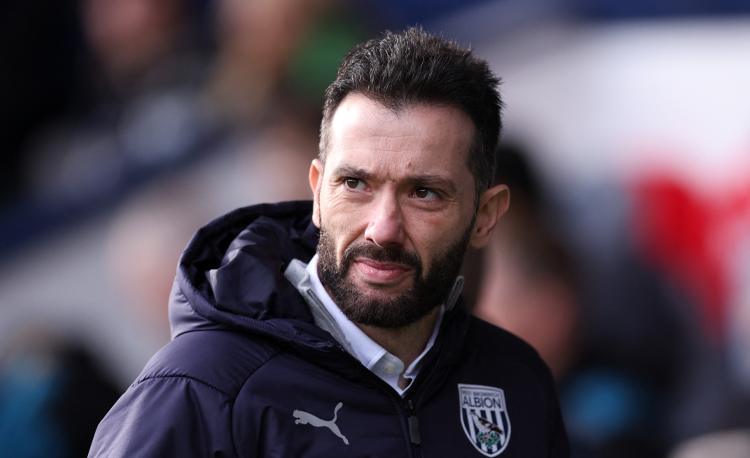You are viewing 1 of your 1 free articles
Penetration or possession: finding the right balance
This session is about helping players recognise the right moments to try to get behind opposing defenders, versus keeping the ball until that right moment arrives.
| Area | Use of a full pitch |
| Equipment | Balls, cones, goals |
| No. of Players | Up to 6v6 plus keepers |
| Session Time | Main practice, 6 blocks of 2mins, Small-sided games both 2x3mins |
This session is about helping players recognise the right moments to try to get behind opposing defenders, versus keeping the ball until that right moment arrives. Different coaches offer different plans in order to stimulate player thinking in this area, but the practice I use at Burnley I have found the most effective across over 10 years of coaching.
Players respond well to the session because it challenges them to think clearly and make good decisions under pressure. It’s technically demanding – in particular the aspect of delivering balls in behind defenders and aligning that with good movement – and there is a physical requirement for them to run hard, both with and without the ball, which fits well with our club’s beliefs on the way the game should be played.
It’s important to practise getting in behind defenders with quality because doing so will ensure your players regularly create goalscoring chances.
I tend to deliver this practice early in the week, far from the game, because it is physically demanding. We revisit it regularly because the idea of getting behind defences is an important one for us.
What do I get the players to do?
We set up as shown with 12 outfield players divided into three teams of four players, plus two keepers. The pitch is penalty spot to penalty spot, 20 yards wide with a goal at each end, as shown (1).
1
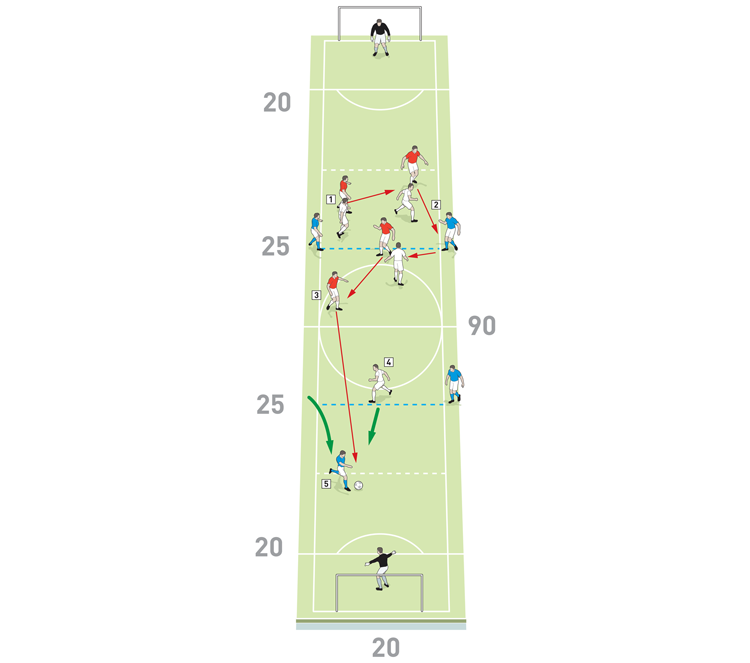
2. The ball is fed to a blue floater on the right
3. He feeds it back inside for a red player to make the pass through to one of the attacking floaters
4. The pass evades the attentions of the line defender
5. Blue moves through for a 1v1 against the keeper
For whites, who start without the ball, the objective is either to win the ball back and score, or simply prevent opponents from scoring.
Up to three players can go in to press and win the ball – one player must stay back in his own team zone. If whites win the ball, they can combine with the blue floaters quickly on the counter-attack.
There is an offside line running through both team zones – therefore the defender should be smart and realise not to advance any further than this line when his team mates go to press.
For reds, who start with the ball, the objective is either to score with a pass in behind opponents that is collected by a blue who goes 1v1 against the keeper, or construct 10 consecutive passes.
The team has an overload in its own zone (4v1 or 4v2 or 4v3, depending on how many opponents press), which is enhanced because the four can also use the supporting players as floaters (on two-touch). The ball needs to be worked to the second bank of floaters, one of whom receives in the scoring area.
The quality and type of delivery into the area behind the last defender is key. It should be lifted, curled, spun or slid into the space so that it eliminates the defender and the keeper, and so the blue attacker can score with the fewest possible touches.
For blue floaters, if the ball is in the zone directly before them, they must support the play and help the team in possession achieve 10 passes. If the ball is in the zone adjacent to them, they must make runs to try to receive behind the last defender and go in to score against the keeper (staying onside in the process). There will be one retreating/recovering defender.
We play this for 2mins with intensity and quality, then rotate the three teams.
How do I progress the practice?
There are a number of possible progressions and we encourage the coaches to devise some of their own in response to how players are reacting, but some of the most common we used are as follows. Firstly, a player in possession can travel from his own zone, if unchallenged, with the ball, and combine with a blue to get in on goal himself (2). Defenders must try to stop him. Alternatively, we can condition it so that balls in behind must be below head height – this encourages quality, invention and disguise.
2
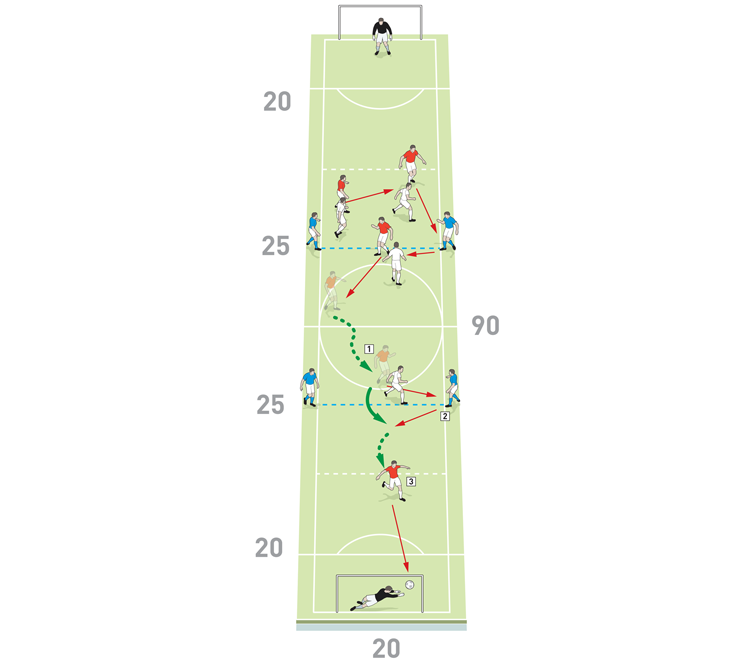
2. He makes a one-two with the supporting blue
3. Now he advances on goal
Or for another progression, we can allow two attackers into the scoring zone plus two defenders, to play 2v2 to a finish (3).
3
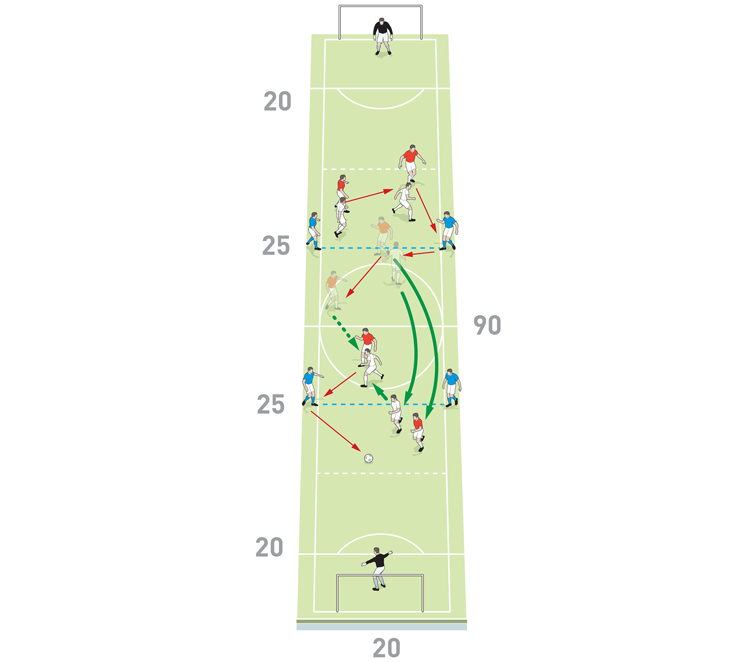
What are the key things to look out for?
Players must look forward early and ask themselves if they can hurt the opposition with a penetrating pass, delivered with quality, to a runner in on goal. If they can’t do that, they should look to keep the ball and wait for a better opportunity to deliver.
The team without the ball must decide how many players to commit to press, and how many to leave back to defend the ball that goes in behind them.
The floating team must think quickly when the ball turns over because their roles change from being supporting players to becoming runners looking to get in behind. In this second role, we want to see good movement along the offside line and then ‘ducking’ in between gaps between defenders at the right moment (on or just before the ball is being played forward).
The keeper should have an appropriate start position in order to be able to easily sweep up any over-hit through-balls.
It should be said, the first time most players do this session, they turn down great opportunities to get in behind because they don’t want to put the ball at risk or give it away. As the session progresses, players tend to realise that the practice is designed for them to ‘look forward’, in behind the defence first, and then if they can’t succeed in behind, they have the option to keep the ball. We want to encourage players to look for gaps in the defence, or space behind defenders, into which they can deliver.
How do I put this into a game situation?
We tend to follow up this practice with a 6v6 small-sided game on a 45x35-yard pitch, divided into thirds. The lines act as offside lines and the intention of both teams is to get in behind their opponents. We’ll then finish with a ‘real’ small-sided game with a natural offside line (halfway line).
Related Files
Editor's Picks
Using the goalkeeper in build-up play
Pressing principles
Intensive boxes drill with goals
Penetrating the final third
Creating and finishing
My philosophy
Pressing initiation
Compact team movement
Defensive organisation
Coaches' Testimonials

Alan Pardew

Arsène Wenger

Brendan Rodgers

Carlos Carvalhal

José Mourinho

Jürgen Klopp

Pep Guardiola

Roy Hodgson

Sir Alex Ferguson

Steven Gerrard
Coaches' Testimonials

Gerald Kearney, Downtown Las Vegas Soccer Club

Paul Butler, Florida, USA

Rick Shields, Springboro, USA

Tony Green, Pierrefonds Titans, Quebec, Canada
Join the world's leading coaches and managers and discover for yourself one of the best kept secrets in coaching. No other training tool on the planet is written or read by the calibre of names you’ll find in Elite Soccer.
In a recent survey 92% of subscribers said Elite Soccer makes them more confident, 89% said it makes them a more effective coach and 91% said it makes them more inspired.
Get Monthly Inspiration
All the latest techniques and approaches
Since 2010 Elite Soccer has given subscribers exclusive insight into the training ground practices of the world’s best coaches. Published in partnership with the League Managers Association we have unparalleled access to the leading lights in the English leagues, as well as a host of international managers.
Elite Soccer exclusively features sessions written by the coaches themselves. There are no observed sessions and no sessions “in the style of”, just first-hand advice delivered direct to you from the coach.
